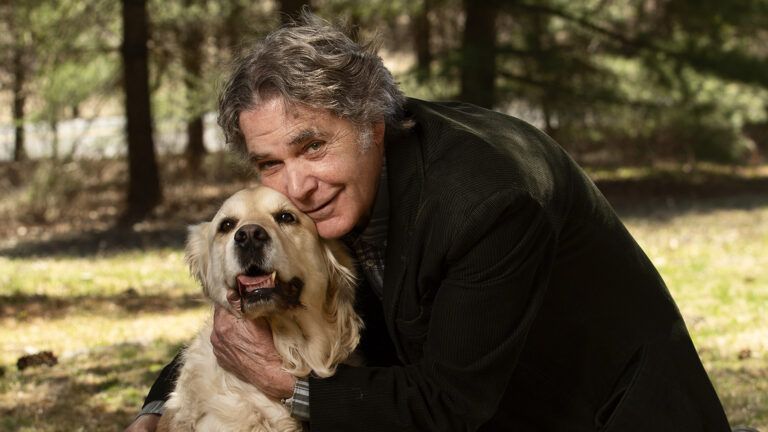A man stood in the hospital elevator along with his wife’s golden retriever, Comet. The dog had been trained to respond in special ways when the man’s wife had a seizure, and could even tell when an episode was about to happen.
When a mother and her daughter boarded the elevator, Comet immediately pulled toward the girl and whined. “Excuse me,” the man holding the leash said, “but my wife’s service dog is alerting to your little girl.”
He explained that the dog behaved in that way when sensing that a person was about to have a seizure.
“No, it can’t be,” the mother replied. But moments later, the girl suffered a grand mal seizure. Fortunately, she received the help she needed right away.
Seizure Alert and Response Dogs
Comet is one of many dogs trained by Jennifer Arnold, author of In a Dog’s Heart: What our Dogs Need, Want and Deserve—and the Gifts We Can Expect in Return and founder of Canine Assistants, a non-profit organization near Atlanta, Georgia, to help children and adults with physical disabilities and special needs.
According to Arnold, who has more than 20 years of experience working with a wide variety of service dogs, predicting seizures seems to be a natural ability for some dogs.
“At this point, we don’t know what they’re sensing,” Arnold says. “Most likely the dog is responding to an odor change.”
A dog’s sense of smell is at least 100,000 times stronger than a human’s. In fact, dogs mainly interpret the world by smelling objects rather than simply looking at them. A dog, says Arnold, can detect a single drop of vanilla in an Olympic-sized pool, 14 days later.
Not only can dogs sense an oncoming seizure, but they can be trained to assist an individual during and after the attack. The dog may lie on the person, retrieve a cordless phone, summon help from another room or press a medic alert button.
Nearly 90 percent of the dogs that Canine Assistants places with individuals are also able to predict or react in advance of a seizure. When they do, they whine, paw, pace, bark or jump. This gives the person valuable time to prepare or get help.
Cancer-Sniffing Dogs
Some dogs are also being trained to sniff out cancer. The pooches’ results are more accurate, and they detect cancer at a much earlier stage, than some medical tests currently being used. Dogs are able to detect lung, breast, ovarian, bladder and colorectal cancers.
Michael McCulloch, director of research at the Pine Street Foundation in California, is conducting ground-breaking research on the subject.
In one study, he collected breath samples from individuals with lung and breast cancer, along with samples from those without. To train the dogs, he presented them with a target sample (one with cancer cells) and once they sniffed, they were offered a reward of food, affection or play.
The dogs then sniffed several samples—some with cancer, some without. When they smelled lung or breast cancer, they responded by sitting beside the appropriate sample. The dogs were right 99-percent of the time.
Best breeds for assistance and research work
Trainers and scientists work with many different breeds of dogs, but agree that the best dogs are friendly, well-behaved and easy to train. Arnold opts for Labrador retrievers, golden retrievers and goldendoodles (a cross between a golden retriever and a poodle) in her work.
Service dogs must be calm and dependable, she says, since seizures can involve thrashing or falling down. Service dogs must not be easily frightened.
McCulloch works with many breeds including miniature poodles, standard poodles, Labrador retrievers and Portuguese water dogs. “Any breed of dog has the genetic makeup to be a good sniffer,” he says. “Temperament and work ethic of the dog makes the biggest difference.”
Pup Prognosticators Pave the Way
Dogs helping people is nothing new, but using dogs to sniff out cancer and predict seizures is on the cusp of medical breakthrough.
Why is this significant? According to McCulloch, “The most important point is that this establishes that exhaled breath could be a valid diagnostic tool.” Researchers, says McCulloch, now have to figure out how to analyze breath samples for cancer and aim for the success rate of the dogs.
Download your FREE ebook, True Inspirational Stories: 9 Real Life Stories of Hope & Faith





